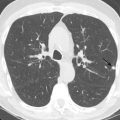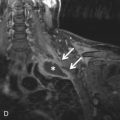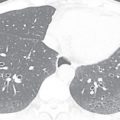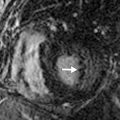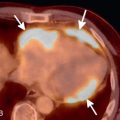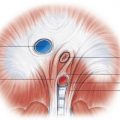■
Introduction
Echocardiography is the primary imaging modality used in the evaluation of cardiac valve morphology, function, and disease. This modality is broadly available and portable, and there is widespread clinical familiarity with the performance and interpretation of this modality. However, it is operator-dependent and is sometimes limited by suboptimal acoustic windows (e.g., patients affected by obesity). In certain patients, MRI may be used in the evaluation of cardiac valve morphology, function, and disease. MRI offers good morphologic assessment of valves and can provide quantitation of valve insufficiency (whereas echocardiography is semiquantitative), as well as a gold standard assessment of ventricular volume, mass, and ejection fraction. However, it is relatively expensive and time-consuming, and the skill set for performance and interpretation of these examinations is not widespread. In certain patients (e.g., evaluation of cardiac valves as part of preprocedural planning and assessment of postprocedural complications) CT is used to evaluate cardiac valve morphology, disease, and, in some cases, function.
■
Cardiac Valve Anatomy
There are four cardiac valves: two atrioventricular valves (tricuspid valve, mitral valve) and two semilunar valves (pulmonic valve, aortic valve). The atrioventricular valves regulate blood flow from the atrial chambers to the ventricular chambers, and the semilunar valves regulate blood flow from the ventricular chambers to the great vessels (pulmonary artery, thoracic aorta).
The inflow and outflow valves of the left ventricle (mitral valve, aortic valve) are in fibrous continuity, whereas the inflow and outflow valves of the right ventricle (tricuspid valve, pulmonic valve) are separated by the muscular infundibulum of the right ventricle, a point of interest in evaluating complex congenital cases.
Aortic Valve
The aortic root is located between the left ventricular chamber and the ascending aorta and supports and surrounds the aortic valve. The aortic root complex consists of the ventriculoarterial junction (also known as the annulus ), aortic valve leaflets, aortic valve leaflet attachments, sinuses of Valsalva, aortic valve interleaflet trigones, and sinotubular junction ( Fig. 37.1 ). The normal aortic valve consists of three leaflets (also described as cusps)—the right coronary, left coronary, and noncoronary leaflets. The leaflets extend from their basal attachments (within the left ventricle) to the sinotubular junction, attaching in a semilunar fashion. The semilunar attachment of the aortic valve leaflets creates triangular interleaflet spaces, with the apex of these triangles known as commissures .

During ventricular systole, the aortic valve leaflets open to allow blood flow from the left ventricular chamber into the aorta ( Fig. 37.2 ). During ventricular diastole, the aortic valve leaflets close (or coapt) to prevent regurgitation of blood back into the left ventricular chamber (see Fig. 37.2 ).

Congenital variations of the aortic valve include a one-leaflet valve, a two-leaflet valve, and a four-leaflet valve.
Mitral Valve
The mitral valve is located posteriorly and to the left of the aortic valve. The mitral valve complex consists of the mitral annulus, mitral valve leaflets, chordae tendineae, and papillary muscles ( Fig. 37.3 ). The mitral annulus is a complex saddle-shaped fibrous ring that connects to the mitral leaflets. There are two mitral valve leaflets: the anterior and posterior mitral leaflets. The anterior leaflet of the mitral valve can be divided into three segments, and the posterior leaflet of the mitral valve can be divided into three scallops (anterior mitral leaflet, A1, A2, and A3; posterior mitral leaflet, P1, P2, and P3). The mitral valve leaflets attach to papillary muscles, the anterolateral and posterolateral papillary muscles, and to the left ventricular wall via the chordae tendineae.

During ventricular diastole, the mitral valve leaflets open to allow blood flow from the left atrial chamber into the left ventricular chamber. During ventricular diastole, the mitral valve leaflets close to prevent regurgitation of blood back into the left atrial chamber.
Congenital variations of the mitral valve complex include fusion of the papillary muscles, annulus with two orifices (also described as a double-orifice mitral valve ), cleft leaflet, and supravalvar ring.
Pulmonic Valve
The pulmonic valve is located anteriorly, superiorly, and to the left of the aortic valve. The pulmonary root complex consists of the ventriculoarterial junction (also known as an annulus ), pulmonic valve leaflets, pulmonic valve leaflet attachments, sinuses of Valsalva, pulmonic valve interleaflet trigones, and sinotubular junction. The normal pulmonic valve consists of three leaflets (also known as cusps ).
During ventricular systole, the pulmonic valve leaflets open to allow blood flow from the right ventricular chamber into the pulmonary artery. During ventricular diastole, the pulmonic valve leaflets close to prevent regurgitation of blood back into the right ventricular chamber.
Congenital variations of the pulmonic valve include a two-leaflet valve, four-leaflet valve, and deficiency or absence of a valve leaflet (known as atresia ).
Tricuspid Valve
The tricuspid valve is located posteriorly and to the right of the aortic valve. The tricuspid valve complex consists of the tricuspid annulus, tricuspid valve leaflets, chordae tendineae, and papillary muscles. There are three tricuspid valve leaflets: the anterior, posterior, and septal leaflets. The tricuspid valve leaflets attach to papillary muscles (usually three papillary muscles—anterior, posterior, and septal papillary muscles) via the chordae tendineae.
During ventricular diastole, the tricuspid valve leaflets open to allow blood flow from the right atrial chamber into the right ventricular chamber. During ventricular diastole, the tricuspid valve leaflets close to prevent regurgitant blood flow into the right atrial chamber.
Congenital variations of the tricuspid valve include deficiency or absence of a valve leaflet (atresia) or apical displacement and partial fusion of the septal and posterior tricuspid valve leaflets (Ebstein anomaly).
■
Valvular Regurgitation
Mitral Valve Regurgitation
Mitral valve regurgitation (MR) is the most common form of valvular heart disease. MR may be primary, due to inherent dysfunction of the valve leaflets, or subvalvular apparatus, the most common type of which is myomatous valve degeneration. This causes elongation of leaflets and chordae and may lead to prolapse (bowing of leaflets >2 mm into the left atrium) and MR. Flail mitral leaflet occurs when there is systolic eversion of the leaflet into the left atrial chamber secondary to a ruptured chordae or papillary muscle and is typically accompanied by significant MR ( Fig. 37.4 ). MR may be characterized as functional (or secondary), where the leaflets and valve apparatus are normal, and changes in the left ventricle, usually due to ischemia or dilation, lead to annular enlargement or papillary muscle displacement, which results in tethering and tenting of the leaflets.


